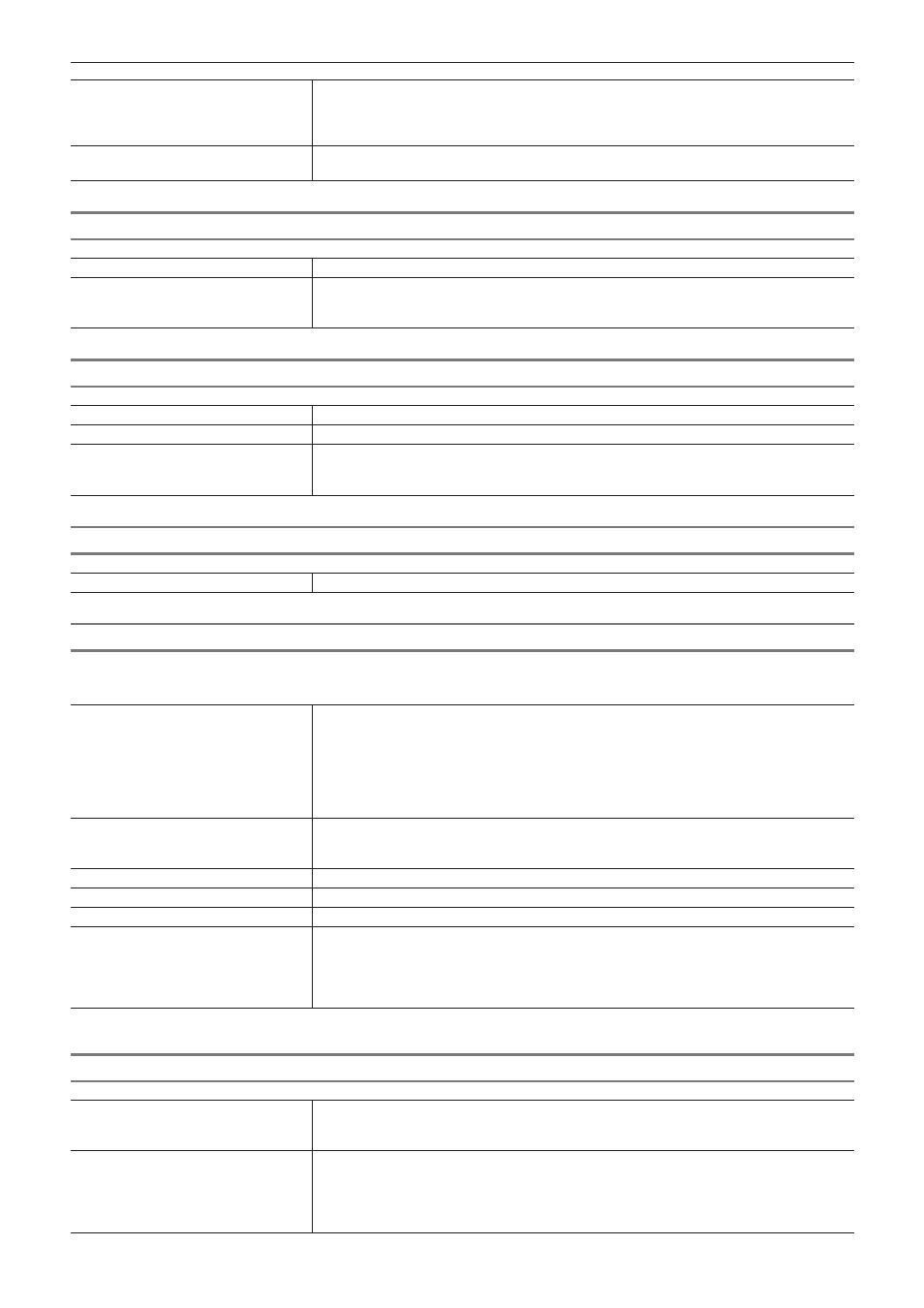Settings - xdcam hd422 compatible] dialog box, Settings - mpeg imx] dialog box, Output h/w, format settings] screen – Grass Valley EDIUS Pro v.7.4 Reference Manual User Manual
Page 112

Chapter 3 Edit Settings — External Device Management
112
[Profile/Level]
Select a profile & level. If [Chroma Format] is [4:2:0] and [4:2:2], the profile will be set to Main
Profile and 422Profile, respectively.
The level for SD image quality will be Main Level, and the level for HD image quality will be
High Level. The profile & level changes according to the format selected in [Chroma Format].
[VBV Buffer Size]
Select the setting method for the VBV buffer upper limit value. When [Default] is selected, the
VBV buffer upper limit value is set using current settings.
[Settings - XDCAM HD422 Compatible] Dialog Box
[Quality/Speed]
Select quality from the list.
[Closed GOP]
Check this item to complete information within each GOP. Although the amount of data
increases, the video can be re-edited using software that supports GOP-based editing.
Normally, leave this item unchecked.
[Settings - XDCAM EX Compatible] / [Settings - XDCAM HD Compatible] Dialog Box
[Bit Rate]
Select a bitrate from the list.
[Quality/Speed]
Select quality from the list.
[Closed GOP]
Check this item to complete information within each GOP. Although the amount of data
increases, the video can be re-edited using software that supports GOP-based editing.
Normally, leave this item unchecked.
[Settings - MPEG IMX] Dialog Box
[Bit Rate]
Select a bitrate from the list.
[Output H/W, Format Settings] Screen
The following explains settings when the IEEE1394 terminal provided as standard on the PC is used for output.
For more information on settings when using Grass Valley products for output, see the user manual included with the product.
[Interface]
Click this item to select the interface to use for output.
When connecting a DV device, for example, to the IEEE1394 terminal provided as standard on
a PC for output, select [Generic OHCI].
When the interface to use for output is selected from the list, the content of each of the items
such as [Stream] switches to match the selected interface.
When the output interface is not to be used, or when outputting to an HDV device or when
when outputting tape to a device not controlled by a deck, select [Not Select].
[Stream]
When [Generic OHCI] is selected at [Interface], the stream is fixed to [Output].
You can make output settings by clicking [Settings].
“[Settings - DV Device Setting] Dialog Box (Generic OHCI)” (w page 112)
[Video Format]
Select the video format to output from the list.
[Audio Format]
Select the audio format to output from the list depending on the video format.
[Audio Output]
Select the audio output interface depending on the video format.
[Stereoscopic Separate L/R Clips]
To export the video of the L side (for left eye) and the R side (for right eye) in the project
created in the stereoscopic edit mode separately, select [Yes].
To export the video of the L side and the R side as a single file, select [No]. Click [Settings]
at the right side of [Stream], and select a stereoscopic processing format in the [Settings -
Stereoscopic Setting] dialog box.
* Selectable items differ according to the setting.
[Settings - DV Device Setting] Dialog Box (Generic OHCI)
Output preview
Displays the color bar.
The color bar is also displayed at the output device if the output video format has been
correctly set.
[DV Format]
Select the encode format ([DV]/[DVCAM]) of the hardware DVCODE.
[Enable Real Time DV Output]
Select whether to perform DV Encode processing. When this item is checked, EDIUS always
performs DV Encode processing. To mute audio during processing, check [Mute DV Audio
Output].
